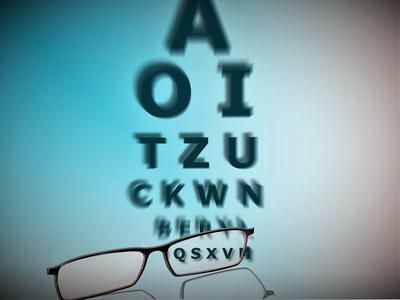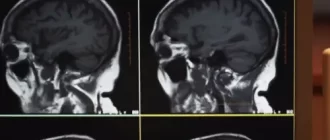Multiple sclerosis (MS) is one of the frequent chronic autoimmune diseases of the central nervous system (CNS).
What Is Multiple Sclerosis?
The prevalence of MS is high and is divided into high, moderate and low prevalence areas. The prevalence is high in North America and Northwestern Europe.
About 2 million MS patients have been identified worldwide. In our country in different regions of the country the number of patients with MS ranges from 2 to 70 patients per 100,000 people, with much less frequent disease in Central Asia and the Caucasus. In large industrial areas and cities, the incidence is higher than in rural areas, with equal incidence in males and females.
Characteristic features:
- Onset of the disease at a young age, usually between 20 and 35 years of age (in some cases, both younger and older people become ill);
- multisymptoms;
- polymorphism (diversity) of manifestations;
- progressive course with a very typical tendency to remissions and new exacerbations.
The cause of MS is not precisely established. The infectious nature of the disease has been suggested. This assumption is based on the acute onset of the disease with fever and changes in the spinal fluid and blood, as well as on pathomorphological data, that are characteristic of infectious diseases.
It is now known that the causative agent of MS may be a neutropene filtering virus identical to the multiple encephalomyelitis virus.
An autoimmune process underlies demyelination (selective brain damage). The routes of transmission are not clear. There is no direct infection from the patient. The possibility of contact route of disease spreading should be considered unlikely.
If you notice similar symptoms, you should consult your doctor. Do not self-medicate – it is dangerous to your health!
Causes of Multiple Sclerosis
Scientists have not yet determined the exact cause of MS. The following factors are known to provoke the onset of the disease:
- Age – the disease can affect people of any age, but it is more commonly diagnosed between 16 and 55 years of age;
- Gender – relapsing-remitting sclerosis affects women almost three times more often than men;
- Heredity – if any blood relatives had multiple sclerosis, the risk of its occurrence significantly increases;
- Infectious agents – the disease may be associated with infection by viruses, including Epstein-Barr, which causes the development of infectious mononucleosis;
- Race – the risk of developing multiple sclerosis is higher among white people, especially those from Northern Europe, than, for example, people from Asia, Africa, and India;
- Climate – people from temperate climates such as Canada, northern United States, New Zealand, northern Europe, and southeastern Australia are more likely to get the disease;
- Vitamin D levels – with a lack of sunlight and associated vitamin D deficiency, the risk of developing multiple sclerosis increases;
- Certain autoimmune diseases – multiple sclerosis occurs more often in patients with thyroid disease, type 1 diabetes, inflammatory bowel processes.
The immune system under the influence of provoking factors begins to attack the myelin sheath, which surrounds and protects the nerve fibers. Myelin also helps the nerves to conduct electrical signals quickly and efficiently.
As lesions develop, nerve fibers can become destroyed or damaged. As a result, the brain’s electrical impulses do not travel properly to the target nerve. This means that the body cannot perform certain functions.
When the myelin sheath disappears or gets damaged, scars form in many areas of the central nervous system. They affect the following areas of the CNS:
- The cerebellum, which coordinates movements and controls balance;
- The spinal cord;
- The optic nerves;
- White matter in some areas of the brain.
Hereditary
Multiple sclerosis is a multifactorial hereditary-determined autoimmune disease. It develops under the influence of external and internal factors. The risk of developing the disease in a child with one parent suffering from multiple sclerosis does not exceed 3%. That is quite a low figure.
The disease is more common among people living on all continents north of the 30th parallel. An enormous role in the occurrence of multiple sclerosis is played by autoimmune mechanisms, which are activated by T-lyphocytes, resulting in damage to the lipids and proteins of the myelin sheath.
Hereditary predisposition of the disease depends on many genes. Genes located on chromosome 7 as well as immunoglobulin heavy chain genes are involved in the development of multiple sclerosis. Multiple sclerosis patients lack the protective loci found in healthy individuals.
Regardless of the cause of the disease, there is destruction of the myelin sheath and formation of pathological foci in the brain and spinal cord. Achieving good treatment results requires a great experience of doctors and a well-equipped clinic.
Causes of MS in young adults
Recent research suggests that multiple sclerosis in young people occurs for the same reasons as in older people. Regardless of age, a person may have a genetic predisposition to the disease. Negative environmental factors also affect people of different ages in the same way.
Before puberty this disease is diagnosed in an equal number of girls and boys, and after puberty – more often in girls. This fact indicates the influence of hormonal changes occurring during this period.
Multiple Sclerosis Pathogenesis
In order to understand the mechanism of MS development, it is necessary to become familiar with the pathological anatomy of this disease.
Microscopic examination reveals prominent and quite characteristic changes, detected with the greatest consistency in the spinal cord, brain stem, and cerebral hemispheres. Multiple plaques of various sizes (from point-like to quite massive, which, for example, occupy the whole cross section of the spinal cord) scattered predominantly in the white matter are seen. This multiplicity and dispersion of focal changes determines the name of the disease.
When the plaques are dissected, they are more dense than normal brain tissue. These thickening, sclerosing plaques made it possible to characterize the disease as sclerosis.
On microscopy, changes in myelin fibers come to the forefront. In the area of foci, plaques, in the white matter there is observed a varying degree of decay of myelin sheath covering nerve fibers of the central conductors, and the axial cylinder often remains intact.
In the acute period, in the presence of edema and infiltration, conduction along the nerve fibers is impaired in the lesion focus. Subsequently, if the axial cylinders die, irreversible, persistent prolapse occurs.
After a period of acute inflammation it turns out that axial cylinders partially retain their integrity and conductivity, sometimes there is even remyelination of nerve fibers. As a result, there is not only remission, but even quite satisfactory recovery of some previously lost functions, which is very typical for MS.
The formation of new inflammatory foci determines the worsening and emergence of new symptoms.
Classification and stages of multiple sclerosis
There is no strict and generally accepted classification of MS. Some authors propose to classify MS according to the clinical course, others according to the localization of the process.
According to the nature of the course there are distinguished:
- The remitting form – characterized by rare exacerbations, alternating with remissions, sometimes lasting years, with the affected parts of the brain recovering either partially or completely;
- primary progressive – imperceptible onset and slow, but irreversible, increase in symptomatology;
- secondary-progressive – at first resembles the remitting form, but in the later stages the transition to the progressive form is characteristic;
- progressive-remitting – a rare form, when the disease, starting with a remitting course, develops into a primary-progressive form.
According to the localization of the brain lesion:
- cerebral – the pyramidal system is affected;
- Cerebral – the most severe form of MS, quickly leading the patient to disability;
- cerebellar – cerebellar disorders, often combined with brain stem damage;
- optical – the visual system is affected;
- spinal – the spinal cord is affected, pelvic disorders and spastic lower paraparesis occur;
- Cerebrospinal form – the most common, characterized by a large number of sclerotic plaques in the brain and spinal cord, clinically revealing cerebellar and cerebral disorders, pathology of the visual, vestibular and oculomotor systems.
MS is divided into stages:
- The acute stage, which lasts for the first two weeks of exacerbation;
- Subacute stage, which lasts for two months from the beginning of an exacerbation and is a transitional stage to the chronic progression of the disease;
- stabilization stage, in which no exacerbations are observed for three months.
Complications of multiple sclerosis
Serious complications, especially in spinal forms, are bedsores and profound pelvic organ disorders.
Acute and subacute cases with lesions of the vital parts of the brain stem can also be adverse.
The patient’s neurological status depends directly on his immunity. Often, increased fatigue, muscle weakness, and dizziness develop. Ataxia (impairment of coordination and voluntary movements), significant decrease of physical and especially motor capabilities of extremities with spasticity development (motor disorders due to increased muscle tone) are noted in progressing stage.
Very often there is a sharp decrease in visual acuity, loss of image sharpness, reduced visual fields, color distortion, diplopia, amblyopia and stabismus develop.
Patients often have irritability, mood swings, in some cases euphoria, inadequate attitude towards their condition.
Cognitive impairment is not uncommon in MS – decreased memory and concentration, impaired spatial orientation.
Pelvic floor disorders – delayed urination and prolonged constipation – also occur with MS, and the patient then loses control of bowel and bladder emptying. Incomplete emptying of the bladder results in urological diseases, up to and including urosepsis.
The above complications require special attention, as they can be the cause of death for the patient.
Diagnosis of multiple sclerosis
In probable MS, along with a complete neurological examination, an MRI examination of the brain and spinal cord should be performed. This method of examination is the most informative additional diagnostic method. It can detect areas of altered density in the white matter of the brain (demyelination foci and gliosis).
Visual evoked potentials, used to determine the degree of preservation of some conduction pathways, may also be an early diagnostic criterion.
When studying CSF, isoelectric focusing of cerebrospinal fluid is considered informative, allowing the isolation of oligoclonal IgG groups.
The criteria proposed by the International Expert Group are widely used to diagnose MS.
| How does multiple sclerosis manifest itself? | Additional research data needed |
|---|---|
| Cases of exacerbations (≥ 2), clinical signs of two or more foci of the disease | No additional studies are needed (MRI data should not rule out MS) |
| Cases of exacerbation (≥ 2), presence of one foci (according to objective data) | Confirmation of “in situ” dissemination data (detection of focal signs) using criteria: – Detection of a foci with a T2 signal (≥1) on MRI in two of the four areas commonly affected in MS (periventricular, juxtacortical, infratentorial, or in the spinal cord); or – the occurrence of a new exacerbation involving another CNS area. |
| Single case of exacerbation, presence of two or more foci (according to objective data) | Confirmation of dissemination data “over time” using the criteria: – simultaneous detection of asymptomatic foci by gadolinium contrast-enhanced MRI and presence of noncontrastable foci regardless of time; or – The occurrence of new foci with a T2 signal and/or gadolinium contrast-enhanced foci on a repeat MRI, unrelated to the period of MS (exacerbation or remission) in which the first MRI was performed; or – The occurrence of a recurrent exacerbation. |
| Single case of exacerbation, presence of one foci (according to objective data) – manifestation of one symptom, clinically isolated syndrome | Confirmation of “in situ” dissemination data using criteria: – Detection of a foci with a T2 signal (≥1) on MRI in two of the four areas commonly affected in MS (periventricular, juxtacortical, infratentorial, or in the spinal cord); or – the occurrence of a second exacerbation involving another area of the CNS. It is also necessary to confirm dissemination data “over time” by means of criteria: – simultaneous detection of asymptomatic foci by gadolinium contrast-enhanced MRI and the presence of noncontrast foci regardless of time; or – The occurrence of new foci with a T2 signal and/or gadolinium contrast-enhanced foci on a repeat MRI, unrelated to the period of MS (exacerbation or remission) in which the first MRI was performed; or – The occurrence of a second exacerbation. |
| Gradually progressive neurologic symptoms with suspected MS (primary progressive form) | MS progression over a year (retrospectively or prospectively) and confirmation of two of the three criteria: – evidence of dissemination of foci “in space” in the brain – detection of a foci with a T2 signal (≥ 1) on MRI in areas typical for MS (periventricular, juxtacortical or infratentorial); – evidence of dissemination of foci “in space” in the spinal cord – detection of foci with a T2 signal (≥ 2) on MRI of the spinal cord; – positive results of cerebrospinal fluid examination – detected oligoclonal bands of immunoglobulin G by isoelectric focusing and/or elevated IgG index. |
Differential diagnosis
It is difficult to diagnose the spinal form of MS when the main, pronounced lesion is localized in the spinal cord, giving rise to a picture of transverse lesions. The diagnosis of acute myelitis is excluded by its relatively slow development, the absence of inflammatory changes in the spinal fluid and symptoms of general infectious disease.
The spinal form of MS presents similarly to arachnoiditis or extramedullary tumor of the spinal cord, but in MS:
- symptoms of paraparesis or tetraparesis predominate over the often absent sensory disturbances;
- no subarachnoid space blockage characteristic of the tumor.
The remissions and exacerbations inherent in MS are not typical of a tumor with a progressive course. MS is characterized by further dissemination of the process – the appearance of new symptoms, indicating the multiplicity of lesions.
The so-called classic form of MS is characterized by a combination of nystagmus, chanting speech and intensional tremor – Charcot triad.
With the further development of the disease, the so-called Marburg pentad is formed: the above symptoms are joined by the absence of abdominal reflexes and atrophy of the optic discs.
MS with a significant predominance of cerebellar disorders has to be differentiated from acute Leiden-Westphal-type ataxia, which can develop as a complication of infectious diseases (malaria, pneumonia, typhoid, etc.). The process is localized in the brain stem and cerebellum. Acute, sometimes sudden development of ataxia is characteristic. Severe disorders of statics and gait of “drunken” character are typical. Cerebellar symptoms – dysmetria, asynergia, intensional shaking of limbs – are expressed sharply. Speech and swallowing disorders of cerebellar nature are possible.
Treatment of multiple sclerosis
Treatment of MS depends on the stage and severity of the disease.
In the treatment of rapidly progressive forms, they use:
- plasmapheresis;
- immunosuppressants (mitoxantrone);
- immunomodulators.
They improve the course of the disease, reduce the frequency and severity of exacerbations.
B-interferrons provide prevention of exacerbations and reduce their severity. Symptomatic therapy includes:
- vitamin E and B vitamins;
- antioxidants;
- nootropics;
- anticholinesterase drugs;
- myorelaxants;
- enterosorbents.
Large doses of corticosteroids are used for five days to eliminate their side effects.
At the remission stage, spa treatment, physical therapy and massage are used.
Therapeutic exercise for multiple sclerosis
MS is a disease in which neurological disorders cannot be completely cured, therefore the main aim of treatment is to improve the quality of life and extend the period of remission.
Prognosis. Prevention
In MS, predominantly gentle and easily tonic therapy, gentle exercise therapy and massage are indicated. Increased asthenization (weakness) is characteristic of MS patients to a greater or lesser degree, so a protective regime with prolonged night’s sleep, etc., is indicated.
Remissions of 1-2 years are not uncommon, especially in the early stages of the disease. In some cases, remissions last eight years or more. In 15% of cases, MS patients do not lose their ability to work, since systematic treatment mitigates the course of the disease, and in one-third of cases, patients are able to perform work under milder conditions.
Provoking or aggravating the course of the disease can be:
- hypothermia;
- infections;
- overexertion;
- trauma;
- pregnancy and childbirth;
- bad habits (smoking and drinking).
The prognosis for life is mostly favorable, since the disease usually lasts for many years. Some patients are able to work for a long time. In some cases, disability occurs during the first or second year of the disease, in others only after many years. In some patients, the disease develops quickly and neurological disorders level off just as quickly. In other patients there is no complete recovery. In a number of patients, the symptomatology remains stationary. There are also patients with a gradual increase in the disease and with a very slow leveling of impaired functions.







